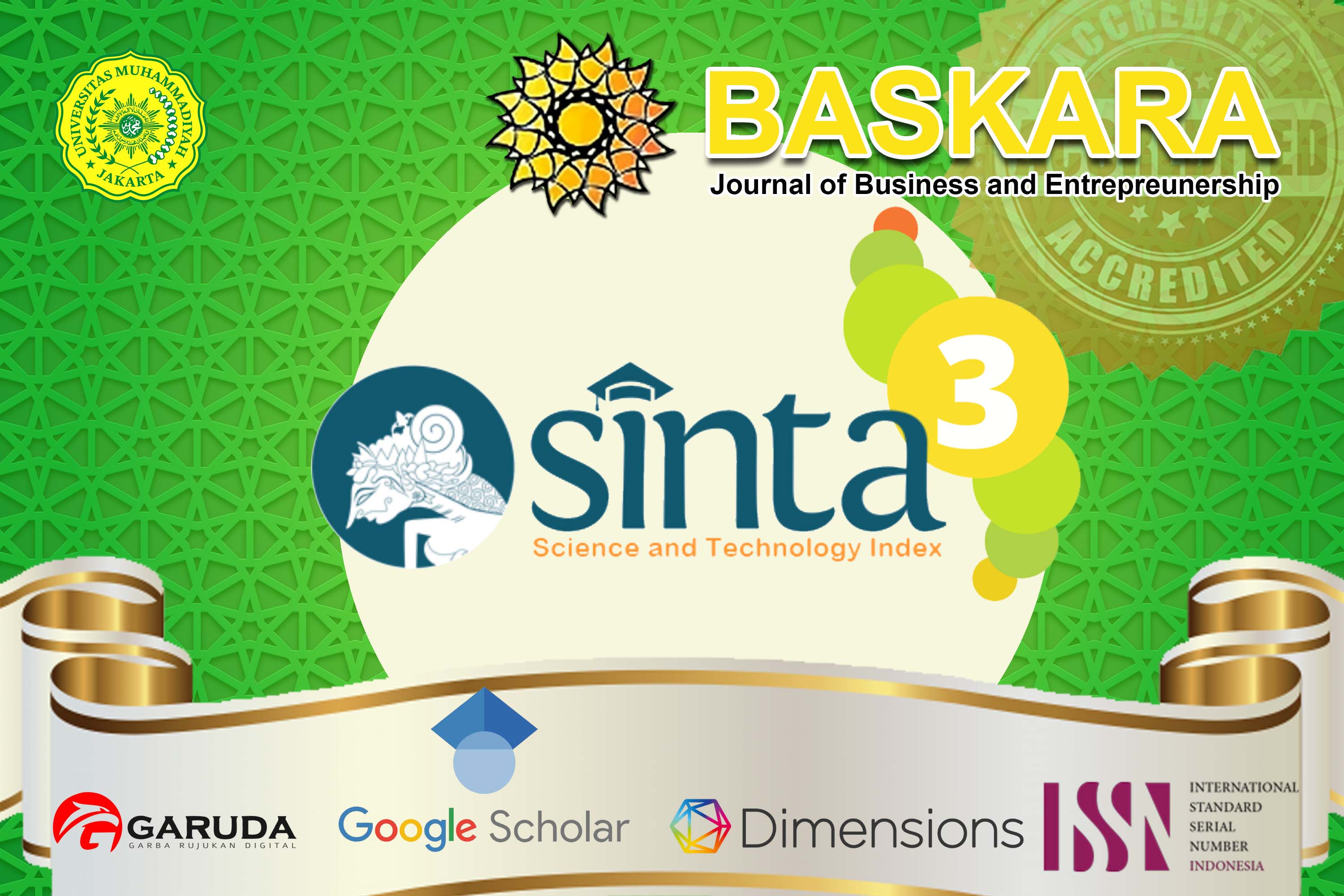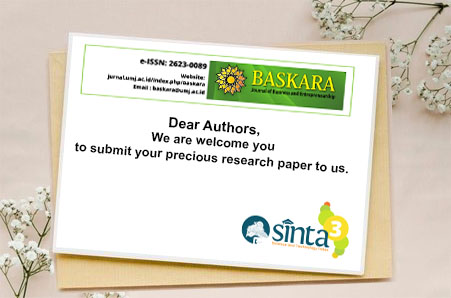Does Culture Strengthen or Break Organization? Revisiting Organizational Culture’s Roles in Organizational Social Life
Abstract
As a collection of individuals who work together to achieve organizational goals, the organization urgently needs glue which attaches all members. Existing studies find that organizational culture can be a means to provoke collectivism climate for influencing organizational performance. The study aims to examine the potential capacity of organizational rituals of arisan and picnic in evoking organizational social cohesion, from the perspective of organizational members. Furthermore, it aims to explore the other possible functions of organizational culture. The data are collected from co-reflection by using certain reflection guidance. The study finds that organizational arisan or picnic can potentially benefit members. It provides opportunities for members to share happy moments, face challenging activities together, forget their conflict and replace it with new happy experiences. However, this ritual does not always bring genuine happiness. It may keep silent storm of emotion as the ritual can exert social pressure, display dominant social status, reinforce power of giving which acquire needs to get back (return the kindness). The study also reveals the emergent co-rituals which are created or joined by in-group members. Co-exist rituals allow members to fit their individual-group dimensions with less social pressure, build stronger emotional bond and support. However, this too strong emotional tie may ignite inter-group conflict and high competition with other groups.
Keywords
Full Text:
PDFReferences
Abdullah, V. A. (2016). Arisan Sebagai Gaya Hidup (Sebuah Kritik Terhadap Masyarakat Konsumtif Perkotaan). Jurnal Komunikasi, 11(1), 17–28.
Abu-Jarad, I. Y., Yusof, N., & Nikbin, D. (2010). A Review Paper on Organizational Culture and Organizational Performance. International Journal of Business and Social Science, 1(3), 26–46.
Amaliya, Y. S. (2017). Perkumpulan Arisan Tayub Sebagai Sarana Pelestarian Seni Tayub di Kabupaten Tulungagung [Skripsi]. Universitas Nusantara PGRI Kediri.
Anggraeni, A. D. P. (2014). Budaya arisan dalam perspektif bourdieu: Studi kelompok arisan perempuan kelas menengah di Surabaya [Thesis, Universitas Airlangga]. http://repository.unair.ac.id/id/eprint/38775
Barsade, S., & O’Neill, O. A. (2016). Leadership and Managing People. Manage Your Emotional Culture. Harvard Business Review.
Benaim, A., Collins, A. C., & Raftis, L. (2008). The Social Dimension of Sustainable Development: Guidance and Application [Master Thesis]. Blekinge Institute of Technology.
Besley, T., & Persson, T. (2018). Organizational Dynamics: Culture, Design, and Performance. 1–50.
Bushardt, S. C., Glascoff, D. W., & Doty, D. H. (2011). Organizational culture, formal reward structure, and effective strategy implementation: A conceptual model. Journal of Organizational Culture, Communications and Conflict, 15(2).
Cárdenas, J. C., & Mantilla, C. (2015). Between-group competition, intra-group cooperation and relative performance. Frontiers in Behavioral Neuroscience, 9(33), 1–9.
Child, J., & Warner, M. (2003). Culture and management in China (WP 03/2003; Research Papers in Management Studies, pp. 1–36). University of Cambridge.
Creswell, J. W. (2013). Qualitative Inquiry and Research Design: Choosing among Five Approaches. Sage Publication Inc.
De Giosa, V. (2010). The Social Dimension in Organizational Models. Anales de Estudios Econ´omicos y Empresariales, XX.
Deakin, J. (2015). Exploring Organizational Culture of Restaurants Through Exploring Organizational Culture of Restaurants Through Workplace Rituals [Thesis]. The University of Maine.
Edy, J., Darlius, & Ilyas, M. (2022). The effect of leadership style, work culture and motivation on the performance of the state civil apparatus on the secretariat of the regional people’s representative board, Bekasi City, West Java. Baskara: Journal of Business and Entrepreneurship, 4(2), 72–95.
Ellinas, C., Allan, N., & Johansson, A. (2017). Dynamics of organizational culture: Individual beliefs vs. social conformity. PLoS ONE, 12(6), 1–20.
Erhardt, N., Martin-Rios, C., & Heckscher, C. (2016). Am I doing the right thing? Unpacking workplace rituals as mechanisms for strong organizational culture. International Journal of Hospitality Management, 59, 31–41.
Eunice, M., Jacqueline, K., Buyeke, E., Wafula, M., & Musyoki, J. (2015). Effects of interpersonal conflict on organisational performance in selected hotels in Kisiitown, Kenya. African Journal of Hospitality, Tourism and Leisure, 4(1), 1–15.
Fischer, M. D. (2008). Cultural dynamics: Formal descriptions of cultural processes. Structure and Dynamics, 3(2). https://doi.org/10.5070/SD932003299
Fitriana, I. (2019). Partisipasi masyarakat dalam program arisan jamban di Desa Kertaraharja Kecamatan Sobang Kabupaten Pandeglang Provinsi Banten [Thesis]. Syarif Hidayatullah Jakarta.
Fulmer, I. S., & Ployhart, R. E. (2014). “Our Most Important Asset”: A Multidisciplinary/ Multilevel Review of Human Capital Valuation for Research and Practice. Journal of Management, 40(1), 161–192. https://doi.org/DOI: 10.1177/0149206313511271
Gabčanová, I. (2011). The employees – The most important asset in the organizations. Human Resources Management & Ergonomics, V (1), 1–12.
Goette, L., Huffman, D., Meier, S., & Sutter, M. (2016). Competition and conflict between organizational groups: Evidence using Random Assignment to Army Platoons (pp. 1–3). https://marketing.wharton.upenn.edu/wp-content/uploads/2016/10/goette_huffman_meier_sutter_abstract.pdf
Halim, I. A. (2020). Motivasi agama dalam tradisi arisan di Masyarakat Betawi. Tatar Pasundan. Jurnal Diklat Keagamaan, XIV (1), 100–121.
Haryono, C. G. (2017). Kontestasi simbol kesuksesan kaum Urban Jakarta dalam ruang liminal arisan keluarga. Jurnal SCRIPTURA, 7(1), 27–35. https://doi.org/DOI: 10.9744/scriptura.7.1.27-35
Hobson, N. M., Schroeder, J., Risen, J. L., Xygalatas, D., & Inzlicht, M. (2018). The Psychology of Rituals: An Integrative Review and Process-Based Framework. Personality and Social Psychology Review, 22(3), 260–284. https://doi.org/10.1177/1088868317734
Ibidunni, S., & Agboola, M. (2013). Organizational Culture: Creating, Changing, Measuring and Consolidating for Performance. European Journal of Business and Management, 5(32), 177–186.
IBM. (2010). People are your most valuable asset. Putting HR to work for you (ORS03009-USEN-00). IBM & Oracle Corporation.
Ikram, M., Zhang, Q., Sroufe, R., & Ferasso, M. (2020). The Social Dimensions of Corporate Sustainability: An Integrative Framework Including COVID-19 Insights. Sustainability, 12(8747), 1–29. https://doi.org/doi:10.3390/su12208747
Islam, G. (2015). Rituals in Organizations: Rupture, Repetition, and the Institutional Event. In The Routledge Companion to Philosophy in Organization Studies (pp. 1–16).
Islam, G., & Zyphur, M. J. (2009). Rituals in Organizations. A Review and Expansion of Current Theory. Group Organization Management, 34(1), 114–139. https://doi.org/10.1177/1059601108329717
Islam, G., Zyphur, M. J., Barsky, A. J., & Rose, J. L. (2006). Rituals Revisited: A New Look at Organizational Rituals (WPE: 074/2006; Insper Working Paper, pp. 1–16).
John-Eke, E. C., & Akintokunbo, O. O. (2020). Conflict Management as a Tool for Increasing Organizational Effectiveness: A Review of Literature. International Journal of Academic Research in Business and Social Sciences, 10(5), 299–311. https://doi.org/10.6007/IJARBSS/v10-i5/7198
Koschmann, M. A., & McDonald, J. (2015). Organizational Rituals, Communication, and the Question of Agency. Management Communication Quarterly, 29(2), 229–256. https://doi.org/DOI: 10.1177/0893318915572386
Lincoln, J. R., & Guillot, D. (2004). Durkheim and Organizational Culture (No. 108-04; IRLE Working Paper, pp. 1–29). University of California. http://irle.berkeley.edu/workingpapers/108-04.pdf
Lunenburg, F. C. (2011). Understanding Organizational Culture: A Key Leadership Asset. National Forum of Educational Administration and Supervision Journal, 29(4), 1–12.
Martin, J. (2012). Symbols, sagas, rites, and rituals: An overview of organizational culture in libraries. College & Research Libraries News, 73(6), 1–2.
Martin, J. (2013). Organizational culture and organizational change: How shared values, rituals, and sagas can facilitate change in an academic library. ACRL: Indianapolis, 4(10), 460–465.
Muhtadin, I., Yusuf, M., Ramadhan, M. F., & Wahdana, H. (2023). Transformation Work Discipline, Leadership Style, And Employees Perfomance Based 21st Century Global Citizens Limited Company. Baskara: Journal of Business and Entrepreneurship, 6(1), 139–154. https://doi.org/DOI :10.54628
Odor, H. (2018). Organisational Culture and Dynamics. International Journal of Scientific Research and Management, 6(1), 31–39. https://doi.org/DOI: 10.18535/ijsrm/v6i1.em05
O’Neill, J. W., Beauvais, L. L., & Scholl, R. W. (2001). The Use of Organizational Culture and Structure to Guide Strategic Behavior: An Information Processing Perspective. The Journal of Behavioral and Applied Management, 2(2), 131–150.
Ozenc, F. K., & Hagan, M. (2018). Ritual Design: Crafting Culture and Designing Meaning for Organizational Change. Advances in Intelligent Systems and Computing. International Conference on Applied Human Factors and Ergonomics. https://doi.org/DOI:10.1007/978-3-319-60495-4_16
Pathiranage, Y. L., Jayatilake, L. V. K., & Abeysekera, R. (2020). A Literature Review on Organizational Culture towards Corporate Performance. International Journal of Management, Accounting and Economics, 7(9), 522–544.
Plester, B. (2015). Ingesting the organization: The embodiment of organizational culture through food rituals. Culture and Organization, 1–20. https://doi.org/DOI: 10.1080/14759551.2013.873798
Pratama, A. P. (2018). Arisan Minangkabau (Studi etnografi di Kota Medan) [Skripsi]. Universitas Sumatera Utara.
Rahmah, M., Purnama, C., Fatmah, D., Hakim, L., Hasani, S., Rahmah, Y., & Rahmah, Z. Z. (2022). Self-efficacy, Innovative Work Behavior and Job Performance in Digital Printing. Baskara: Journal of Business and Entrepreneurship, 5(1), 1–11. https://doi.org/DOI: 10.54628
Rokach, A. (2020). Belonging, Togetherness and Food Rituals. Open Journal of Depression, 9, 77–85. https://doi.org/10.4236/ojd.2020.94007
Rudiatin, E., 2023, The Culture Policy for MSME in Digital and Their Prospects DOI : 10.54268/baskara.v6i1.18535
Saad, G. B., & Abbas, M. (2018). The impact of organizational culture on job performance: A study of Saudi Arabian public sector work culture. Problems and Perspectives in Management, 16(3), 207–218. https://doi.org/10.21511/ppm.16(3).2018.17
Saim, M., Cemberci, M., Civelek, M. E., & Gunel, D. (2015). Groups and their effects in organizations. European Scientific Journal, 11(32), 12–34.
Schuldt, K. S., & Gomes, G. (2020). Influence of organizational culture on the environments of innovation and organizational performance. Gestão & Produção, 27(3), 1–26.
Serrat, O. (2009). Dimensions of the Learning Organization (42; Knowledge Solutions, pp. 1–8). Asian Development Bank.
Sholekhah, I. M., Widodo, J., & Wahyono, W. (2020). The Effect of Social Capital and Learning Organization on Marketing Performance Through the Marketing Strategy. Journal of Economic Education, 9(1), 1–8.
Smollan, R. K., & Sayers, J. G. (2009). Organizational Culture, Change and Emotions: A Qualitative Study. 9(4), 435–457. https://doi.org/DOI: 10.1080/14697010903360632
Sun, R., Li, S., & Liu, W. (2020). A Congruence perspective on how human and social capital affect learning capability and innovation. PLoSONE, 15(4), 1–17.
Suwaryo, J., Daryanto, H. K. K., & Maulana, A. (2015). Organizational Culture Change and its Effect on Change Readiness through Organizational Commitment. Bisnis & Birokrasi: Jurnal Ilmu Administrasi Dan Organisasi, 22(1), 68–78.
Tangkudung, J. P. M., & Senduk, J. J. (2016). Mapalus arisan sebagai salah satu model kearifan lokal masyarakat kecamatan kauditan Kabupaten Minahasa Utara. Jurnal LPPM Bidang EkoSosBudKum, 3(2), 107–123.
Tebitendwa, A. (2021). Intergroup Conflict and Organizational Performance: A Case of Kiboga Hospital, Uganda. IntechOpen Book Series. https://doi.org/DOI: 10.5772/intechopen.96150
van Marrewijk, M. (2004). The Social Dimension of Organizations Recent experiences with Great Place to Work® assessment practices. Journal of Business Ethics, 1–14. https://doi.org/DOI: 10.1007/s10551-004-1897-7
Vance, R. J. (2006). Employee Engagement and Commitment. A guide to understanding, measuring and increasing engagement in your organization. SHRM Foundation.
Veismoradi, A., Akbari, P., & Rostami, R. (2012). A Study on the effect of social capital on learning organization: A case study of Jihad Agriculture Organization of Kermanshah, Iran. Management Science Letters, 2, 2909–2916. https://doi.org/doi: 10.5267/j.msl.2012.09.019
Weng, H.-C. J., & Chang, W.-W. V. (2017). Shaping Organizational Culture by Using Work Songs as a Ritual: A Case Study of the Zonson Sports Corporation in China. International Journal of Information and Management Sciences, 28, 367–387. https://doi.org/DOI:10.6186/IJIMS.2017.28.4.5
Wulandari, T. A. (2019). Cultural Approaches. Unikom. https://repository.unikom.ac.id/id/eprint/60189
DOI: https://doi.org/10.54268/baskara.v7i1.23356
Refbacks
- There are currently no refbacks.
Copyright (c) 2024 BASKARA : Journal of Business and Entrepreneurship
BASKARA: Journal of Business and Entrepreneurship Copyright of Baskara: Journal of Business and Entrepreneurship (e-ISSN: 2623-0089 ). This work is licensed under a Creative Commons Attribution-NonCommercial 4.0 International License |
















